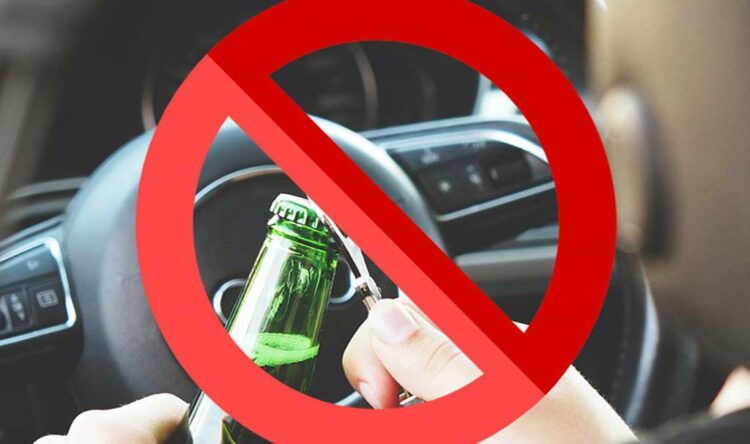Government fails road safety
How can we improve road safety going forward?
Contribution by Stuart Snape, Managing Partner at Graham Coffey & Co. Solicitors.
Provisional data for the number of road traffic accidents in the UK show an estimated increase compared to 2020 numbers – which were likely affected by the pandemic – but a 12% reduction in the fatality rate compared to the 2017 to 2019 average.
Still, 2021 saw 27,300 people killed or seriously injured on the road. The road safety experts at Graham Coffey & Co. Solicitors highlight the safeguarding measures that are necessary for all road users to learn and implement, using our knowledge of common road traffic accident causes and data and the legislative steps that must be followed, in order to bridge the gap between safer infrastructure and improved driving habits.
Below, we will examine the common causes of road traffic accidents, as reported by The AA, and contextualise the dangerous practices on behalf of drivers that can lead to these accidents, with the hope that more drivers will be more careful and take steps to stay safe on the roads.

Speeding remains a fatality culprit
Perhaps the most commonly known offender, speeding remains one of the leading causes of road accidents; the Royal Society for the Prevention of Accidents estimates that speeding accounts for 11% of all collisions reported to the police that caused injury, and 24% of all fatal collisions.
While anti-speeding campaigns have long been in the public eye, the fact that speeding continues to cause fatalities has resulted in the need for further action to be taken on behalf of the government.
As of 6th July 2022 in the European Union, every new car made must include a speed limiter – an in-built system which monitors the vehicle’s speed and notifies the driver whenever the speed limit is breached, through auditory or physical indicators. The limiter can be overridden, ensuring that drivers can operate the car in emergency situations where there is a need for acceleration. Otherwise, it is a useful reminder for drivers of their speed in conjunction with the limit and will serve as an instant warning of potentially dangerous driving behaviour.
So far, the UK government has steadfastly turned down opportunities to make such systems mandatory, despite this technology being installed in the vast majority of new cars.
At the onset of the UN Decade of Action of Road Safety, running from 2021-2030 in parallel to the EU Road Safety Policy Framework over the same timeframe, such policies would go a long way toward placing the UK as a global leader in road traffic safety.

Tangible distractions require stronger retribution
Performing multiple tasks simultaneously divides your attention and reduces your ability to process information efficiently. When driving, performing an unrelated task can severely impair your cognitive, auditory, and visual performance, significantly increasing the risk of causing an accident.
While a longstanding driving taboo, the rules governing the illegality of using a mobile device behind the wheel were only tightened from March 2022. The impact of using a mobile phone is well-known – the dual-task interference causes a significant loss of cognitive ability, resulting in a gross loss of situational awareness and a near-total lack of hazard detection.
It is therefore inadequate that the penalty for consciously increasing the risk of a fatality by using a mobile device while driving only results in six points on your driver’s licence. The act employs a deliberate disregard for the safety of all other road users, and the continued use by road users in the UK begs the question; Why does using a mobile phone not result in an automatic driving ban?
From testing insufficiency to reckless driving
A driver needs no distraction to be dangerous; choosing to drive recklessly, and with total neglect for the safety of others, can stem from a number of causes – one of which is education.
To be allowed to drive in the UK, an individual must reach the pass mark of 86% on their driving test. Following a theory test of 50 multiple-choice questions – a number exceeded only by four other countries in the world – and a Hazard Perception test, a driver can take a practical driving test whenever they feel they are ready to do so.
The testing format is largely focused on analysing the prospective driver’s knowledge of the road laws, rather than their knowledge and physical experience of road safety. Unlike 15 other countries in the world, the UK does not require any number of mandatory driving hours before taking the test.
With a declining theory test pass rate – falling from 63.1% in 2010 to the current 47.1% – the expectation of driving ability lies in the wrong aspect of driving. Implementing mandatory driving hours results in an increase in practical experience of road safety, leading to a better understanding of how reckless driving can easily lead to a road traffic accident or fatality.

Cognitive and legislative impairments
Tiredness and the consumption of alcohol or drugs all significantly impair a driver’s cognitive ability. These are not recent discoveries; campaigns have long sought to drive these behaviours away from the roads and to make drivers take better responsibility and refuse to operate a vehicle under these conditions. However, the continued fatality rate caused by these impairments calls for further government action – and there is no better time to begin.
The UN Decade of Action on Road Safety has a plan to reduce global road injuries and fatalities by 50%, strengthening the EU’s targets in tandem. However, the lack of government policy to achieve these attainable goals is a reflection of the movement towards a disregard for road safety and a detachment from responsibility for road traffic accidents. This is only supported by recent government legislation that cuts the funding for road traffic accident victims to access legal advice, while increasing the threshold for making a claim by thousands of pounds – in favour of motor insurance company profits.
In 2021, the Safe Roads for All report called on the UK government to adopt a Safe and Healthy Mobility Strategy and Action Plan for roads for the next decade, but has still not been accepted.
Within this report is a focus on increased care for road traffic accident victims, calling for best practice help to be given, which includes the provision of medical and humanitarian care that victims need. In light of new government legislation that funnels victims through a complex online portal, operated and funded by the insurance industry, it is clear that the priority has shifted towards monetary gain rather than increased safety.
Using National Road Victim Month for progress
In order to increase road safety, there has to be a joint increase in accountability on behalf of both the driver and the government. By introducing driving tests that are more representative of real driving and more enlightening about road safety measures, and punishing drivers who breach road safety laws and completely disregard the safety of others, the UK could begin its journey to protecting its road users and further reducing the number of fatalities.
In light of August’s National Road Victim Month, the instilling of better safeguarding measures could put the UK in good stead for reaching the targets set by our global peers.
Stuart Snape, Managing Partner at Graham Coffey & Co. Solicitors.
Coffey & Co. Solicitors has long used knowledge of road safety laws and regulations to help road accident victims understand their rights and receive compensation for their suffering. During National Road Victim Month, our team of expert lawyers brings light to the action needed to improve safety in the UK, and how to find legal support in times of need.





